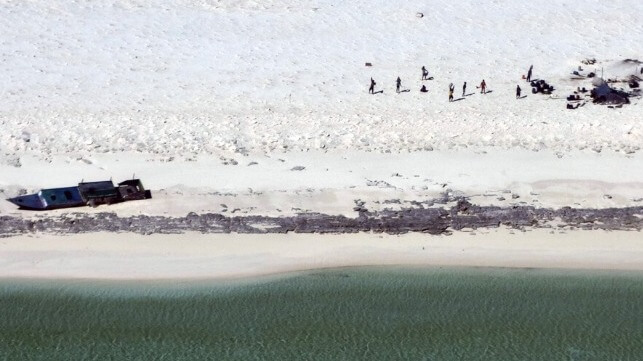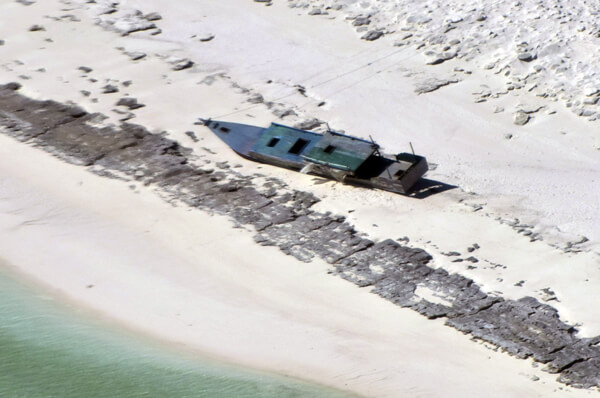11 Castaway Fishermen Rescued Week After Australia’s Strongest Cyclone

The Australian Maritime Safety Authority is reporting the rescue of Indonesian fishermen stranded on a sandy outcrop for nearly a week after the most powerful cyclone in more than two decades swept across Western Australia. Despite possibly having the highest wind speeds recorded in Australia, the authorities are reporting that the only known casualties are eight other Indonesian fishermen who had been working in the area with the ones that were rescued.
The rescue happened after a chance spotting on the afternoon of April 17, five or six days after the fishermen were washed ashore in the storm. AMSA reports that a plane making a routine patrol along the coast looking for smuggling and other illegal activities discovered the castaways. The chance sighting was on a sandy outcropping in the Rowley Shoals, a popular area for deep-sea fishing. The aircrew made the discovery on Bedwell Island approximately 200 miles west of the Australian city of Broome.
The Australian Border Force alerted AMSA of their sighting and the maritime authority dispatched one of its rescue aircraft to investigate further. Confirming that a boat was on the island and seeing signs of a temporary encampment, a rescue helicopter was sent to perform the rescue. Speaking to Australian Broadcasting the crew said it proved to be a tricky rescue. They were unable to land their helicopter on the sand and because they reached the scene near dusk, they were required to switch over to the use of night vision equipment before hoisting the survivors aboard.
A total of 11 people were rescued and flown to Australia for medical treatment and to recount their story. The survivors from eastern Indonesia said they had been fishing in the area aboard their vessel the Express 1 when the cyclone hit the region. They had been sailing with a second vessel the Putri Jaya which was lost in the storm. The 11 individuals were reported to be in overall good health although not having fresh food or water for a week and they will be flown home in the coming days.

Their fishing boat came to rest on a sandy outcropping in a storm with winds up to 180 mph (AMSA)
The Indonesian fishermen recounted how their wooden boats were tossed around in the storm before the Express 1 was deposited on the sandy island either late on April 11 or early on April 12. They believed the second boat had been lost with nine crew aboard but the following day one of the crewmembers from the second boat washed ashore on the same island. He recounted how he tied himself to fuel cans and remained in the storm-tossed ocean overnight before reaching the island. His eight shipmates are believed lost.
Australian meteorological teams reported that the storm approached northwest Australia with wind gusts thought to have reached 180 mph. Wind speeds were measured at a sustained 135 mph for 10 minutes at another small uninhabited island, Bedout Island, which lies about 25 miles offshore. Before the storm, officials at the port of Port Hedland warned that seas were expected to reach between 13 and 16 feet in the bay.
Although final data is still being calculated from last week’s storm, the meteorological service believes its wind speeds significantly exceeded another cyclone in 1999 that hit the area with a record of 166 mph. Last week’s storm crossed the coast on April 14 approximately 75 miles east-northeast of Port Hedland before heading inland. The busy ore port was closed for several days before the storm but missed the brunt of the storm and experienced only minor damage before reopening mid-day on April 14.
